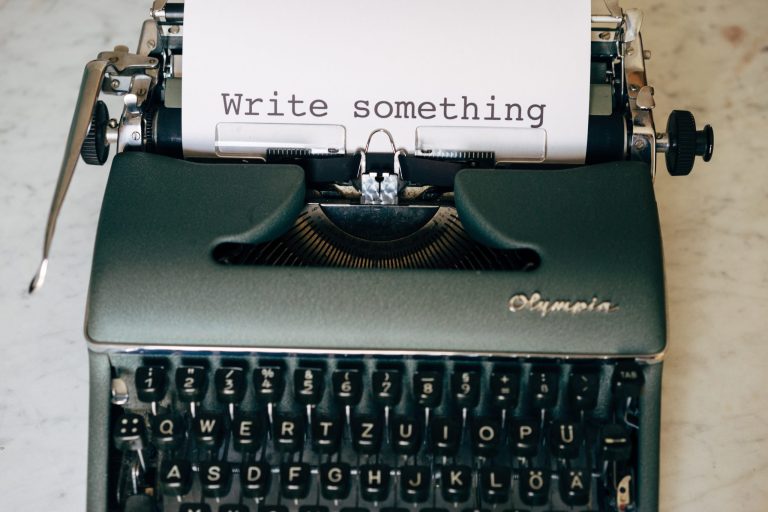Introducing Conflict into Your Story
The last few weeks we’ve been looking at the third corner pillar of novel construction: conflict with high stakes. Conflict is crucial in a novel, and it doesn’t have to come from just one main source or one clearly defined antagonist. We explored the topic of stakes, and looked at how high stakes are measured by the value the protagonist puts on the thing at stake (and this applies to all other characters in your book as well). In essence, the stakes are high if what is being risked is highly valued. These are personal stakes.
Although I haven’t yet gotten into “public” stakes (what is at risk for others in your novel or “the world at large”), just keep in mind that any and all stakes have to concern your hero. If there are going to be large consequences to his choices—ones that affect others on a small interpersonal level, community level, or even global level—he has to care about those repercussions—because the book is essentially about him, his choices, and his goal. Depending on the genre, stakes and their consequences will vary. But a great novel will have conflict and high stakes at its core.
Introduce the Conflict as soon as Possible
Although it’s best if the central conflict element in your story is introduced as quickly as possible, it may not work with your plot to do so from the get-go. Certainly, the sooner the reader can be introduced to the protagonist’s goal for the book, the better. And when that goal is presented, that’s the time to bring in the obstacles that are in her way. And compound them as much and as soon as possible.
Runaway best-seller The Art of Racing in the Rain (one of my all-time favorite books) is told from Enzo’s point of view. Enzo is an old dog, and he tells the story of his owner, Denny, who marries and has a baby with his wife. There is very little conflict, if any, at all for many chapters in the book as we get to know this dog and his family, which is highly entertaining and engaging even without any conflict (and that’s a hard thing to pull off—because that tension is lacking). But just when we need some conflict, it comes barreling in.
Denny’s young wife gets ill and dies, and to his shock, her parents decide they want custody of his beloved daughter. And they will stop at nothing to get her—even go so far as to set him up for a big fall by having him falsely accused of rape. The rest of the book is embroiled in this central conflict of man against his in-laws (is that universal, or what?). And it gets worse and worse and more and more hopeless for Denny.
I have to share my favorite moment in the book. At the height of despair (Denny’s dark moment of the soul), when he feels so hopeless and beaten and has decided he must give in (the stakes are too high now for him to go after his goal of custody because he has to think of his daughter’s welfare above his own), he reaches for the legal agreement to sign that gives his in-laws custody. Even his friends’ urging won’t make him change his mind. But then Enzo, who understands exactly what is going on and is not a bit happy, pees all over the papers. Take that! That hilarious, poignant, symbolic gesture is not lost on Denny and is all he needs to rally his resolve to fight for what is most precious to him (the classic element of the protagonist’s friend convincing him he needs to go in a different direction). This is the turning point in the book that rushes the book to its terrific climax and resolution.
The conflict did not appear right away in the book, but Garth Stein did not just ignore it or put it off. He didn’t just plop it in at a random moment. He carefully set all the pieces in place for it to arrive. Earlier in the book we meet the in-laws and learn something about them before they descend like wolves. We watch Denny fall in love with his wife and see what a great, devoted parent he is. Everything, then, is in perfect place for the introduction of the conflict.
Just as in the movie The Perfect Storm. The storm doesn’t hit in the opening scene, but we know it’s coming. The anticipation of conflict brewing on the horizon can add tremendous tension to a story. But you have to prepare the stage for its arrival so it feels big.
To Reiterate . . .
Simply stated: conflict is anything that stands in the way of your character reaching her goal. And that can be internal or external. The other primary characters in your novel are going to have goals too, and those should be goals that impact your protagonist and her goal. So, it stands to reason that they too should face conflict.
The more conflict the better. The messier, the better. Conflict should start at one level and keep rising and getting worse. Generally the middle of your novel is the muddle—where you muddle everything to make it harder and harder for your character to reach her goal. Don’t be nice. Nice is for real life (sometimes).
Also simply stated: The conflict will include high stakes if what is risked or threatened is precious to your character. Which is what you want.
I know this is sounding repetitive to you by now, and maybe it just seems all too simple. But if you work with this basic framework (think: building construction), you will have that sturdy foundation.
Spend time thinking about the central conflict element in your story and all the different ways it can raise ugly heads to threaten and upend your protagonist. Try to pit as many things against him, and push the stakes so that what he values most is at risk of being lost (or is actually lost). If you build your corner pillar in this way, it will support just about any novel you create.
Got any thoughts about conflict? What are the best types of conflict in the novels you like and read? What kinds of stakes interest you most as a reader? Share some thoughts on this post—I’d like to hear them!
Inspection checklists:
Inspection Checklist 1-concept with a kicker












Thanks for this reminder. I’m reading Tom Robbins’ “Fierce Invalids Home from Hot Climates” right now and so far the conflict is so weak that it’s glaring. I love his prose and wit as always, so I’m continuing on, but I’d like to see the stakes get higher…and quick. Thanks again!
Yeah, Tom Robbins was all about attitude lol. His, I mean. His writing style, very inventive narrative. But sometimes very little conflict and more emphasis on general outrageous story telling. I read many of his books years ago. Also had the same feeling about John Irving. Loved The World According to Garp and those types of books, but tastes of readers in general have changed with the way TV and movies are all about conflict, high stakes, and tension. As I mentioned in earlier posts, tension and high stakes are created by showing the characters’ needs and passions for things. It is a very different way of looking at novel structure, I feel, and one most people don’t consider. Writers, in general, think high action = high tension. But it’s not true. High tension comes with caring for a character and seeing their inner and outer conflict. And very low-action scenes, just a person standing alone thinking, can be highly tense and riveting if those important novel elements are there and set up correctly. Some of the most tense moments in novels come at very quiet points of realization where nothing outside is happening but explosions are going off inside the character’s head or heart.